There are too many habitats available in the world for animals, like – forests, lakes, grasslands, wetlands, arctic and deserts. So today we are going to discuss some of the few collections of desert animals.
In the realm of desert animals, the survival process is a testament to resilience, adaptation, and the remarkable diversity of life that flourishes against all odds in some of the harshest environments on Earth. Each desert animal plays a crucial role in the intricate web of life
There are too many types of desert animals available, like – mammals, insects, reptiles, and birds. The most common mammal animal of the desert is a camel.
Here we are provided some of the desert animals, with their pictures and interesting facts. So, please stay with us and check out.
What are desert animals?
Ans:- Those animals who live in the desert are, we call them the desert animals. Some popular desert animals are the camel, scorpion, stink beetle, and many more.
List Of The Desert Animals
These are some lists of desert animals, so please stay with us and check out the below collections.
Roadrunner
The roadrunner is a bird that is available in the desert area. This bird can run too fast 20 miles per hour. The Roadrunner, known for its iconic appearance and quirky behaviors, is a unique bird species found in the deserts of the southwestern United States. They eat insects, small reptiles, and even snakes.
- Types:- Bird.
- Scientific Name:- Geococcyx californianus.
- Interesting Facts:- 1) They can eat snakes. 2) Roadrunners cannot fly properly for long distances.
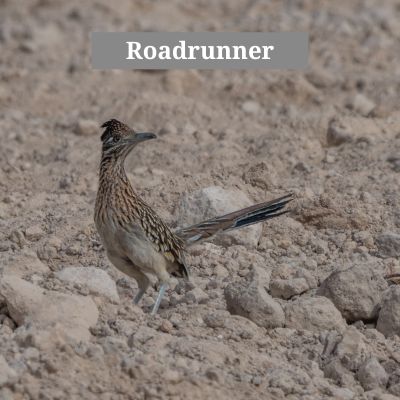
Fennec Fox
There are many types of foxes available in the world, the fennec fox is one of them which is found in the desert area. One of the most striking features of the Fennec Fox is its oversized ears. Their skin color is brown-grey-white also. Fennec Foxes are known for their playful and social nature
- Types:- Mammals.
- Scientific Name:- Vulpes zerda.
- Interesting Facts:- 1) Fennec Fox is the smallest fox species in the world. 2) They live in a small family group.
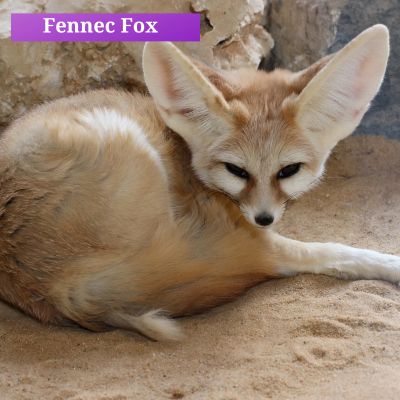
Pale Fox
The Pale foxes are found in the desert area. These foxes are primarily nocturnal, using the cooler nighttime temperatures to hunt and forage for food. Pale Foxes are versatile hunters with a diverse diet that includes insects, small mammals, birds, and plant matter.
- Types:- Mammals.
- Scientific Name:- Vulpes pallida.
- Interesting Facts:- 1) The Pale Fox, they the African Sand Fox. 2) The Pale Fox is primarily active during the night.

Arabian Oryx
The Arabian oryx is a white skin color goat-like animal who have two horns and their horns are straight. They are also known as the white oryx, because of their white skin color. These majestic antelopes are known for their ability to withstand harsh desert conditions
- Types:- Mammals.
- Scientific Name:- Oryx leucoryx.
- Interesting Facts:- 1) They have very long and straight/slightly curved horns. 2) The Arabian oryx lives in a small group called a herd, dominated by the male.

Addax
Addax is an animal that looks like the Arabian oryx, but their horns are designable. The addax animals are the masters of desert survival, capable of enduring high temperatures and scarcity of water by extracting moisture from the plants they consume when they find that.
- Types:- Mammals.
- Scientific Name:- Addax nasomaculatus.
- Interesting Facts:- 1) Their pale coats, help reflect the sun’s rays, which can help them to stay cool in extreme heat. 2) Addax is known for the white antelope.

Camel
Camel is a very popular desert animal which is known by the people. In the desert, people use the camel for their basic needs, like – transportation, camel milk, and many more things. The camels have evolved remarkable adaptations that can enable them to thrive in hot and arid environments in the desert.
- Types:- Mammals.
- Scientific Name:- Camelus bactrianus.
- Interesting Facts:- 1) The camel store water in the humps, but not as liquid as fat. 2) They have been used by humans for transportation, and milk, for thousands of years.
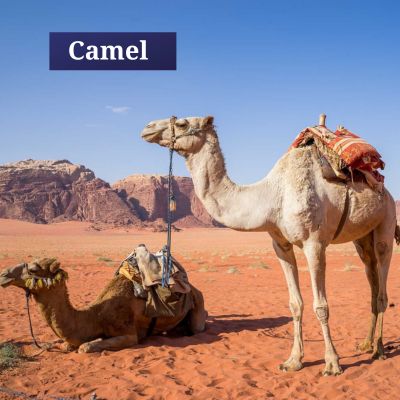
Gila Monster
The Gila monster is a desert reptile that is very popular around the world. The Gila Monster is one of the few venomous lizards in the world. They use their venom is primarily used for subduing prey and self-defense. They are very active in night and go for prey food, like – small mammals, birds, eggs, and reptiles.
- Types:- Reptiles.
- Scientific Name:- Heloderma suspectum.
- Interesting Facts:- 1) Gila Monsters are primarily active during the night. 2) Gila Monsters primarily feed on small mammals, birds, eggs, and carrion.

Scorpion
The scorpion defining feature of scorpions is their venomous stingers, which are used primarily for defense and subduing prey. The scorpions are opportunistic feeders, preying on a variety of insects, spiders, and small animals. Overall the scorpions are a fascinating creatures that hold a significant culture in the desert area.
- Types:- Arachnids.
- Scientific Name:- Scorpiones.
- Interesting Facts:- 1) Their venom can be deadly to their prey. 2) Scorpion gives live birth.

Jerboa
Jerboa is a small type of mammals which are found in the desert, they look like the weird type, their back leg is long and front lest is too short and they have a long tail as compared to the body. The jerboa is an extraordinary creature found in the arid regions of Asia and North America.
- Types:- Mammals.
- Scientific Name:- Dipodidae.
- Interesting Facts:- 1) The Jerboas are small rodents with large hind legs, long tails, and relatively small front legs. 2) They feed the desert plant and plenty & of green leaves that they have found.

Onager
Onager looks like the donkey, these animals are found in the desert areas of India, Iran, and Mongolia country. Onagers typically live in small herds led by a dominant male. The Onager animal stands as a symbol of resilience and the intricate balance of life in the harsh desert landscapes of Asia and North America.
- Types:- Mammals.
- Scientific Name:- Equus hemionus.
- Interesting Facts:- 1) They maintain body language for social bonds. 2) Onagers are swift runners and can reach impressive speeds.

Sidewinder
The sidewinder is a unique species of rattlesnake. The sidewinder uses a special and unique technique known as sidewinding to traverse sandy terrain efficiently. Their unique locomotion style and specialized anatomy showcase their efficient adaptation to arid desert environments. They feed small rodents, lizards, and other desert-dwelling animals for surviving.
- Types:- Reptiles.
- Scientific Name:- Crotalus cerastes.
- Interesting Facts:- 1) They strike quickly and use their venom to their prey before consuming it. 2) They are a species of rattlesnakes.

Rhim Gazelle
The Rhim Gazelle, also known as the Slender-Horned Gazelle, is a graceful, beautiful, and endangered antelope species native to the desert area. Their size is small like domestic goat ize, but they can run too fast and their horn is so designable. Rhim Gazelles are social animals, they live in a group called is herd and are dominant by the male.
- Types:- Mammals.
- Scientific Name:- Gazella leptoceros.
- Interesting Facts:- 1) They are also called the sand gazelle. 2) Rhim Gazelles are well-adapted to desert environments.
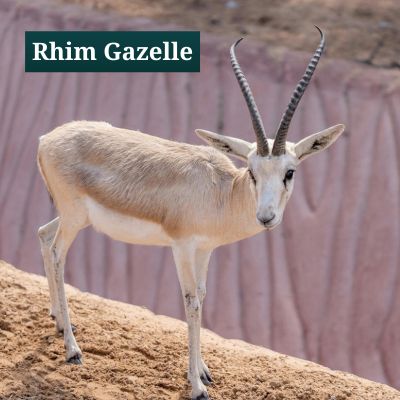
Nubian Bustard
The Nubian bustard bird is also known as the white-bellied bustard. They are tropically found in found in open grasslands, savannas, and semi-desert areas, where they forage for insects, seeds, and plants. As with so many birds, they are facing some big problem, like – habitat loss, human disturbance, hunting, and food crisis.
- Types:- Bird.
- Scientific Name:- Neotis nuba.
- Interesting Facts:- 1) The nubin bustard is one of the heaviest and largest flying birds in Africa. 2) They are especially known for their deep, and booming calls that can cover a big long distance.

Barbary Ostrich
The barbary ostrich is commonly known as the North African ostrich or red-neck ostrich. The Barbary Ostrich is characterized by its striking appearance, featuring a distinctive red or pinkish neck, legs, and bill. They can live in a variety of habitats, not only the deserts are, they are also in grasslands, savannas, and semi-arid areas.
- Types:- Bird.
- Scientific Name:- Struthio camelus camelus.
- Interesting Facts:- 1) They are the world’s largest bird. 2) Male Ostriches dance for their ladies to impress her.

Desert Tortoise
The desert tortoise is a good and fantastic reptile native to the desert or arid regions. They are well adapted to the adaption of the desert areas. They are very digging underground burrows to escape extreme temperatures. Overall the desert tortoise holds an iconic presence in the desert landscapes.
- Types:- Reptiles.
- Scientific Name:- Gopherus agassizii.
- Interesting Facts:- 1) These tortoises are skilled diggers. 2) They spend much of their time underground during the hot weather and colder months.

Desert Iguana
Desert iguana is a type of lizard, that is found in the desert and arid areas. Desert Iguanas are primarily herbivorous, feeding on a diet of vegetation, flowers, leaves, and some insects. The desert iguana plays is important role in the desert culture life cultures.
- Types:- Reptiles.
- Scientific Name:- Dipsosaurus dorsalis.
- Interesting Facts:- 1) These lizards have special adaptations to survive in the desert environment. 2) The desert iguana eats plants, grass, and wildflowers, but they also consume small animals and insects.
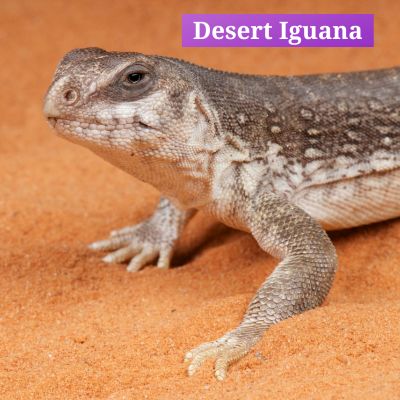
Thorny Devil
The thorny devil is a weird-looking reptile. This reptiles are found in the arid regions of the southwestern United States and northwestern Mexico, the Desert Iguana inhabits desert landscapes. Their body is covered by the same types of spikes.
- Types:- Reptiles.
- Scientific Name:- Moloch horridus.
- Interesting Facts:- 1) Thorny Devils primarily feed on ants, which make up a significant portion of their diet. 2) This is a unique lizard species that thrives in the harsh desert environments.
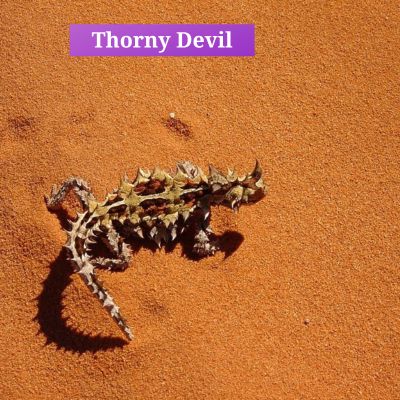
Stink Beetle
The Stink Beetle, commonly known as a stinkbug or shield bug, is a unique insect known for its defensive secretion that is found in desert areas. They have a unique power to protect themselves, that is they can release a chemical substance from glands located on their bodies when they have face threatened or disturbed.
- Types:- Insects.
- Scientific Name:- Halyomorpha halys.
- Interesting Facts:- 1) Stink bugs are bugs. 2) A stink bug’s worst enemy is a tiny, parasitic wasp.
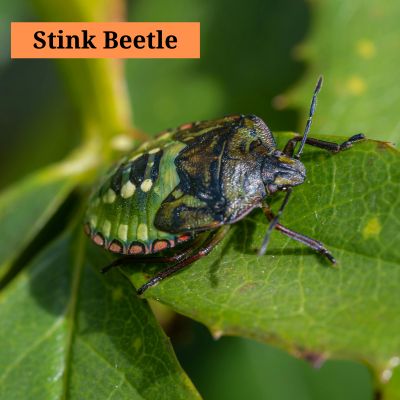
Desert Crocodile
The desert crocodile is mainly known as the West African crocodile or sacred crocodile. They are very well-adapted for survival in the hot desert area. They are facing threaten due to habitat loss, hunting, and human-wildlife conflicts.
- Types:- Reptiles.
- Scientific Name:- Crocodylus suchus.
- Interesting Facts:- 1) They Have Adapted For Survival. 2) They are also called West African crocodiles.
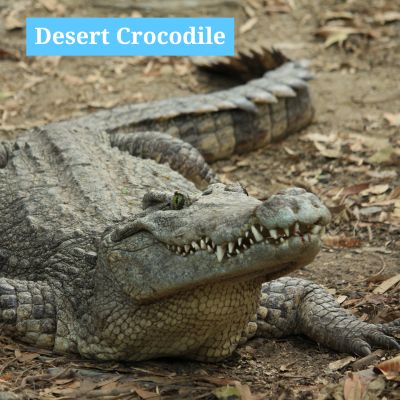
Cape Hare
The cape hare is a small mammal found in the desert and arid areas. They are also known as the scrub hare. The cape Hares are herbivorous, feeding on a varied diet that includes grasses, herbs, roots, and other plant materials. They can run and jum too fast, that help them to escape from the hunter.
- Types:- Mammals.
- Scientific Name:- Lepus capensis.
- Interesting Facts:- 1) Cape Hares, also known as Scrub Hares. 2) Cape Hares are swift runners and can reach speeds of up to 45 miles per hour when they need to.

Mearns Coyote
The means coyote is a subspecies of the coyote native to the southwestern United States and northern Mexico. Mearns’ Coyotes inhabit a range of ecosystems, including deserts, grasslands, and scrublands. Mearns’ Coyotes are known to be social animals, often forming family groups led by a dominant breeding pair.
- Types:- Mammals.
- Scientific Name:- Canis latrans mearnsi.
- Benefits:- 1) They are typically smaller than the gray wolves but larger by the ears. 2) Their skin color is similar to the brown/grey wolf.
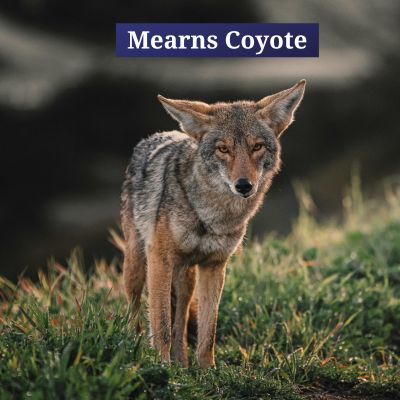
Other Desert Animals
- Cape Hare.
- Sahara Frog.
- Gila Monster.
- Greater Flamingo.
- Dama Gazelle.
- Stink Beetle.
- Spotted Owl.
- Canyon Bat.
- Mearns Coyote.
- Crissal Thrasher.
- Cairo Spiney Mouse.
- Mojave Desert Tortoise.
- Egyptian Pipistrelle.
- Arabian Sand Gazelle.
- Desert Horned Lizard.
- Deathstalker Scorpion.
- Desert Bighorn Sheep.
- Antelope Jackrabbit.
FAQ ( Frequently Asked Question )
Name some common reptiles, found in the desert.
Ans:- These are some of the reptile animals found in the desert animals, like – the sidewinder rattlesnake, Gila monster, desert iguana, and Chuckwalla desert tortoise.
How do desert animals stay cool in extremely hot temperatures?
Ans:- This is the not same, depending on the animal to animal.
- Some animals have some good adaptation power, which is helpful for them.
- To avoid dehydration in such hot temperatures, some animals have an efficient water conversation mechanism.
- Some desert animals are found for shelter in burrows, rock crevices, or vegetation during the hottest part of the day to find shade and lower temperatures.
How do the desert animals find water in the desert animals?
Ans:- Here we are pointing out some of the good points.
- Food Source:- They are reaching out the water by their food or what they eat.
- Water storage:- Some desert animals have some special power, they can store the water in their body.
- Buried Water:- Some desert animals are experts in finding out buried water, underground.
What makes desert animals different from animals in other habitats?
Ans:- These are some of the few points that make different a desert animal from other habitat animals.
- Extremely hot weather:- They are very good for the heat weather in the desert habitat.
- Food Sources:- The dessert animals have some problems finding out the feed.
How do camels store water in their bodies for long periods in the desert?
Ans:- The camels have specialized red blood cells that can retain water effectively. These cells are oval-shaped and can swell to accommodate more water when the camel drinks, allowing them to maintain hydration for longer periods.
Read More:-
Final Lines
We hope you have liked the upper desert animals collections, and you have gained knowledge about those animals. Then please share it with your close people, this is also very helpful for the kids.
A big thanks for visiting and spending a good time with us. Cheers.

